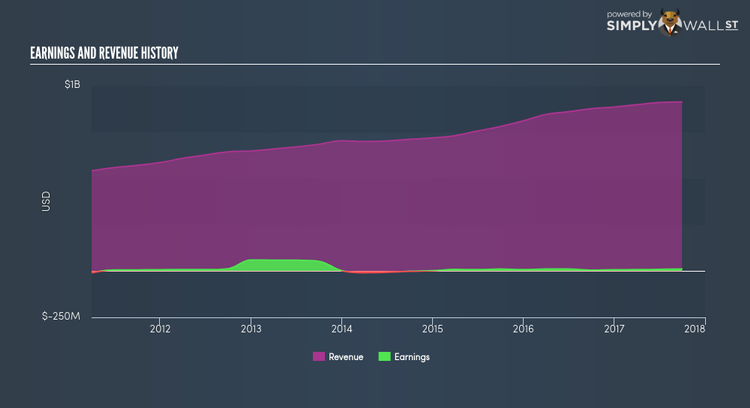Want To Invest In RadNet Inc (NASDAQ:RDNT)? Here’s How It Performed Lately

When RadNet Inc’s (NASDAQ:RDNT) announced its latest earnings (30 September 2017), I wanted to understand how these figures stacked up against its past performance. The two benchmarks I used were RadNet’s average earnings over the past couple of years, and its industry performance. These are useful yardsticks to help me gauge whether or not RDNT actually performed well. Below is a quick commentary on how I see RDNT has performed. View our latest analysis for RadNet
Did RDNT’s recent earnings growth beat the long-term trend and the industry?
I prefer to use data from the most recent 12 months, which either annualizes the most recent 6-month earnings update, or in some cases, the most recent annual report is already the latest available financial data. This method allows me to examine various companies on a similar basis, using new information. For RadNet, its most recent trailing-twelve-month earnings is US$10.69M, which compared to last year’s level, has escalated by over 100%. Since these figures may be fairly short-term thinking, I’ve estimated an annualized five-year value for RadNet’s earnings, which stands at US$12.96M This means though earnings increased from last year’s level, over the past couple of years, RadNet’s earnings have been deteriorating on average.
Why could this be happening? Well, let’s look at what’s going on with margins and if the rest of the industry is feeling the heat. Revenue growth in the last couple of years, has been positive, however earnings growth has been falling. This implies that RadNet has been growing expenses, which is harming margins and earnings, and is not a sustainable practice. Inspecting growth from a sector-level, the US healthcare industry has been growing, albeit, at a unexciting single-digit rate of 8.68% over the prior year, and a substantial 10.11% over the past half a decade. This shows that any tailwind the industry is deriving benefit from, RadNet is able to leverage this to its advantage.
What does this mean?
While past data is useful, it doesn’t tell the whole story. Recent positive growth doesn’t necessarily mean it’s onwards and upwards for the company. There may be factors that are impacting the entire industry hence the high industry growth rate over the same time period. You should continue to research RadNet to get a better picture of the stock by looking at:
1. Future Outlook: What are well-informed industry analysts predicting for RDNT’s future growth? Take a look at our free research report of analyst consensus for RDNT’s outlook.
2. Financial Health: Is RDNT’s operations financially sustainable? Balance sheets can be hard to analyze, which is why we’ve done it for you. Check out our financial health checks here.
3. Other High-Performing Stocks: Are there other stocks that provide better prospects with proven track records? Explore our free list of these great stocks here.
NB: Figures in this article are calculated using data from the trailing twelve months from 30 September 2017. This may not be consistent with full year annual report figures.
To help readers see pass the short term volatility of the financial market, we aim to bring you a long-term focused research analysis purely driven by fundamental data. Note that our analysis does not factor in the latest price sensitive company announcements.
The author is an independent contributor and at the time of publication had no position in the stocks mentioned.

